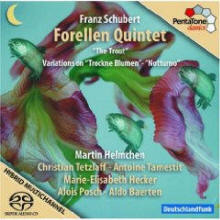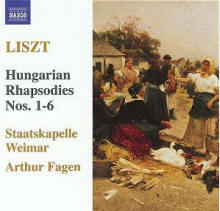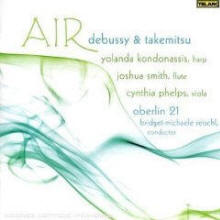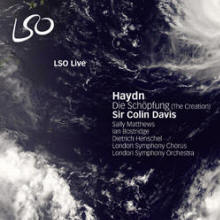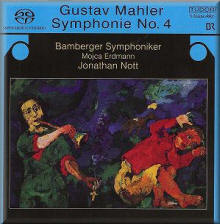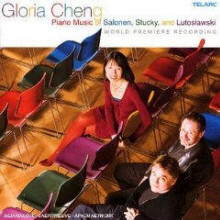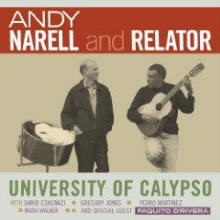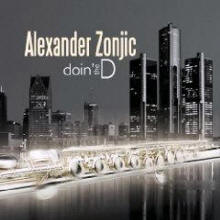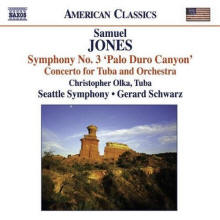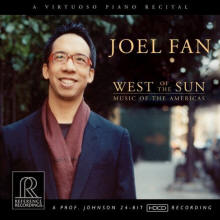|
You are reading the older HTML site Positive Feedback ISSUE 44july/august 2009
A Ton of New Releases
from Telarc, Heads Up, PentaTone, Naxos, Tudor,
Reference Recordings, and LSO!
Franz Schubert, Piano Quintet in A, "The Trout". Trockne Blumen variations for Flute and Piano. Piano Trio in E flat. Performers: Forellen Quintet. Pianist: Martin Helmchen. PentaTone Hybrid Multi-Channel SACD PTC 5186 334 This PentaTone SACD, featuring a group of outstanding solo performers, is simply outstanding and to call this release great is probably accurate. The recording quality is unsurpassed by other commercial releases I have heard recently. Readers with good memories might wonder about my comments about Ray Kimber's rather limited distribution of his superb and unique IsoMike recording of the Fry Street Quartet and a pair of Beethoven String Quartets. Sorry, but I have not listened to the IsoMike recordings (deliberately so) for many weeks. I do not know if or when I might compare the recordings. This superb recording has everything going for it and for listeners. If you are new to chamber music, this music is possibly the very best introduction for many reasons. The fullness, richness and palpable power of a well recorded quintet that adds a piano and double bass to a typical string trio can sound closer to a string orchestra than to a trio. Then top that advantage with simply beautifully appealing music. The final and perhaps overwhelming reason for many people is simply the very natural or realistic sound quality. Every one of the quintet's instruments sounds so good, so close to the "real thing", though the piano seems to be even "closer" and particularly well reproduced, very impressively so to the extent that I do not have any other comparison to offer! Some background information needs to be shared with our readers. First, I am using and have been using very extensively upgraded early Sony SACD hybrid CD players by Allen Wright's VSEI company of Switzerland. These unique players have very heavy duty construction, weight close to sixty pounds and feature top loading transports. The slow adoption of the SACD recording process and the great expense of cost-no-concern construction is estimated to be in excess of ten thousand dollars if resurrected now." To these machines he has developed a highly sophisticated bit-clock for "the ultimate listening quality". This unique clock is used to reduce if not eliminate the previously unheard of limiting digital phenomenon called "jitter". Any really good top-of-line SACD player (though probably not any universal players) "should result in similar excellent audio quality" if not quite such an ultimate result. Even regular CDs of this release should sound superior and more realistic than other recordings. If not, have your player checked out thoroughly or substitute a really good player and hear how good reproduced music can sound with the new very best recordings. Finishing the remainder of the disc are two solid performances. One features Aldo Baerten playing a wooden flute with Martin Helmchen's piano playing on the Variations on Trochne Blumen. Performances are definitely sprightly and though the piano gets to shine for about for about the first five minutes or so, then the flute gets to shine loud and clear, perhaps a tad too loud for ideal realistic concert balances though bound to please flute lovers. The last selection is a straight forward performance of the Adagio from the Notturo Piano Trio. It is pleasing and with solid playing, though neither performance nor composition is competitive to the great Trout Quintet featured on this outstanding SACD release. Here is probably a good place to bring up a situation or fact that has had many answers over the years that I have read. Sadly most of the answers are wrong, though kind of interesting. There is nothing in or about this quintet to cause it to be referred to as "The Trout"; Schubert did not name or refer to it by that name and researchers found no evidence that the name "Trout" was ever used in Schubert's lifetime referring to this composition! Interested readers can take it from the researching reference sources and questionable internet guides. Good luck… or happy hunting.
Franz Liszt, Hungarian Rhapsodies Nos. 1-6 Orchestrated. Orchestra; Staatskapelle Weimar Conductor: Arthur Fagen. Naxos CD 8.570230 Franz Liszt started his career by performing with the pianos he was hired to promote. He was so good that his playing quickly led to concert tours and great acclaim. His playing was outstandingly good and easily obtained a unanimous rating as one of the greatest pianists ever, if not the greatest. His performances were flamboyant attention getters. He is often referred to as the "Paganini of the keyboard". Paganini is almost unanimously considered to be the greatest violinist in history with almost demonic passion. The two are probably the best technical performers respectively in the history of music. Probably running out of showoff types of music to play, Liszt readily took to composing music to show his great virtuosity. Many of his piano compositions were "unplayable" even by professional players of his day. His Hungarian Rapsodies for piano are justly famous and popular. They were (particularly the way Liszt played them) and still are real showpieces. These six orchestral versions were not orchestrated by Liszt. Flautist and composer, Franz Doppler, was credited by Liszt, though Liszt did some revisions. Of his composed nineteen (fifteen originally plus four many years later) only this disc's six were ever scored later and then not by Franz Liszt! Only numbers two and five have the same numbers as their original piano composition numbers. Keep that in mind if you ever decide to have both piano and orchestral versions. Rhapsody No. 2 has for many years been the most popular one. The inherent beauty of these famous pieces is apparent in this generally fine release. However, if memory serves me well, a few conductors of a generation ago, such as as Arthur Fiedler, Antal Dorati and Fritz Reiner brought even greater immediate appeal with their interpretations. Here Arthur Fagen, well known opera conductor, offers seemingly straight forward note perfect performances and the orchestra responds in kind. Sometimes I had the feeling that a bit of something was missing here compared to Naxos' best audio efforts. At times the soundscape seemed to be a constrained laterally and lacking a bit of ultimate and natural detail. With just a few minutes remaining on the last selection, No. 6 (originally piano rhapsody No. 9), something changed. Clarity increased as did the overall size of the soundscape, and the amount of natural sounding detail increased as did the much greater clarity and palpability of the drums. I know not what happened for certain though the change was significant and all for the better! This is probably a worthy introduction to Liszt's orchestral music though his Les Preludes is still my favorite orchestral selection. Addendum: Literally as this review is being typed, another stack of review recordings has arrived. I mention it because of a number of possible comparisons with one of the newly received discs. It is a just released ARTHAUS MUSIK production, the live recording from the Deutsches National theater Weimar also featuring this recording's Staatskapelle Weimar though with general music director Carl St. Clair conducting Wagner's DIE WALKURE ! The recording is almost four hours long in dts-HD Master Audio 5.1 all on one High-resolution multi-channel Blu-ray disc! I do not know if I will be able to review it in time for the same issue as the above Liszt recoding.
AIR, Debussy and Takemitsu. Music for Harp, Flute and Strings. Harp: Yolanda Kondonassis. Flute: Joshua Smith. Viola: Cynthia Phelps. String Orchestra: Oberlin 21Conductor: Bridget-Michaele Reischl. Telarc CD-80694 If my memory serves me correctly, the previous harp recordings featuring Yolanda Kondonassis that I reviewed were pretty much "light-weight" music mainly for relaxed listening pleasure; not much in the way of serious classical music. There is quite a bit of very pleasurable music on this recording and some very serious music even to the extent of presenting for listeners, impressionist music compared almost a century apart. This release tries to be and do, so very much, that in addition to Richard Rodda's fine background liner notes, Yolanda Kondonassis felt the need to personally add a couple of pages to help listeners understand what the music and performers are trying to do. Read the notes and study them a bit though do not let them interfere with your plain old musical enjoyment of some fine compositions, particularly beautifully played and recorded. Debussy's quite famous Dances sacred and profane are well known and loved by nearly all and is the first selection on this disc. After that, the two composers pretty much take turns with the playing order of their respective compositions. Most of the music is about or from the winds, the sky or the sea and is mainly impressionistic and that means at times it should stir feelings of the above rather than simply imitating the wind, sky or sea. (To imitate "the sea" someday listen to Debussy's La Mer). There is much to enjoy here, some very serious, some simply enjoyable and some even relaxing. Beginning classical music lovers should be able to handle it with ease as much of it has a feeling of light and air. The recording, though not SACD is naturally full, rich and atmospheric. All that adds up to a fine recommendation.
Haydn, Die Schopfung (The Creation). Conductor: Sir Colin Davis. Orchestra: London Symphony. Chorus: London Symphony. Director: Joseph Cullen. LSO Live Hybrid SACD LSO0628 Large scale orchestral plus chorus selections always seem well suited to the LSO with Sir Colin Davis in particular. Rarely releasing anything less than very good overall, this time a bit of bragging should be in order. Soloists Sally Matthews, Jan Bostridge and Dietrich Henschel deserve some of the credit for an all around excellent release. The audio engineers continue to improve upon their earlier efforts to counter the notorious recording qualities offered by the Barbican Center. I doubt if Colin Davis with the London Symphony Orchestra at this point in time could possibly do less than an excellent production of a work such as this. Overall excellence seems to be seems to be a very fitting declaration for this fine release. The strings are simply getting even better while the brass is in a zone of relaxed excellence and well captured, as is the fine chorus, by the audio engineers. With just over100 minutes spread across two discs there would be plenty or room for more music. Perhaps the problem would be exactly what music? I would probably chose a rare orchestral piece but perhaps vocal lovers would appreciate each of the soloists perform a favorite piece with the unique backing of the superb LSO ! Why not?
Gustav Mahler, Symphony No. 4. Orchestra: Bamberg Symphony. Conductor: Jonathan Nott. Soloist: Mojca Erdmann. Tudor Hybrid Multi-Channel SACD 7151 Gustav Mahler was a truly outstanding conductor with a number of the world's best known orchestras to his credit. It might be a toss up but I bet history will rank him even higher as one of the best composers. For many years I had heard that his reputation was founded on his huge orchestral symphonies usually with large choruses. I still think that anyone building a classical music collection should have a massive symphony by Mahler and one by Bruckner. As I have noted in many reviews over the years, Mahler's First Symphony is included by me in the handful of best first symphonies ever written. I always also include Brahms and Sibelius in that unique group. Over the years I have changed and not just aged. For some years now, my favorite Mahler composition has become his fourth symphony. No long before her passing, Mahler's wife declared that his fourth symphony had become her favorite. The liner notes state that Mahler's Fourth Symphony has become his most popular work. Add it to your classical listening collection. The first few listenings to this relatively subtle or sublime composition, should reveal a unique beauty of a creation in my personal feeling or opinion. Then read Ellen Kohlhass' fine introspective liner notes. Then remember and replay some of those passages that seem to be at odds with the overall beauty and often dream-like melodies and hauntingly beautiful passages. Mahler is reported to have told his violinist friend that joy and terror were both equally possible in his fourth symphony. The liner notes are excellently written, interesting and informative in the extreme. Ultimately read them thoroughly while listening. Repeated listening to this version of Malher's Fourth Symphony has simply grown on me till it seems to be just about perfect. That impresses me to no end—far more than direct comparison to other versions. The audio quality is a model of SACD performance at its best. All audio evaluations were done on my stereo reference system, at the moment crowned with VSEI's new Uber-Clock for jitter reduction/elimination. The atmospheric, almost ethereal reproduction, at times with ultimate beauty is almost faultlessly contrasted with some very clean and detailed drum thwacks as called for in the score. I am able to even brag on the playing and audio quality of the strings in this release. Searching for things to fault and coming up empty handed leaves me no choice; full range, full dynamic range and clearly natural detail make the decision easy. This release has to receive my highest recommendation. Soprano Mojca Erdmann's often child-like voice seems to be what Mahler wanted to hear here, capping a great SACD release by TUDOR.
Piano Music of Salonen, Stucky and Lutoslawski (World Premiere Recording) Gloria Chen; Pianist Telarc CD- 80712 If you like or love solo piano playing and enjoy searching for new music written for piano, Telarc had you in mind with this new release. Not all are actually new compositions but older and never published or played publicly. Many of these world premiere recording selections are often referred to simply as "occasional pieces." There are often many reasons for their creation. Some are fun or exercise pieces and often not meant for publication or published performances. There are sixteen varied selections here, fairly well split between the three composers. Probably none will ever be considered great compositions but most are simply enjoyable and satisfying, even melodic. A couple are "modern or contemporary" and a bit difficult to follow though rather short. Gloria Chen enjoys a reputation for excellence in playing new or unfamiliar pieces. Though difficult to be certain, she seems to handle everything very smoothly. Telarc's audio quality, as usual, is quite good here though not quite the equal of their very best efforts or that offered by most of their SACD releases. Recommended for new piano experiences.
University of Calypso, Andy Narell and Relator. Steel Pans: Andy Narell, band and guests. Guitar and vocals: Relator. Heads Up HUCD 3168 Like steel pans and Calypso- what a coincidence! Heads Up has a beautifully recorded and well played CD released with you in mind! Andy Narell's steel pans seem to have a better tonal quality than any in my memory. I have read he has them specially treated to achieve that quality. There definitely is cool jazz wandering through most of the tracks and sometimes leading them. Make no mistake though, Calypso is definitely featured to the delight of lovers of that not quite yet gone era of some years back. As usual, the Heads Up release offers cleanly and clearly recorded audio quality. Enjoyment here will be easy to obtain.
Doin' the D, Alexander Zonjic. Flute: Zonjic and Guests. Heads Up HUCD 3126 Want to hear a great deal of flute playing done superbly plus very well recorded? You are really in luck as this release is aimed right at you. You will hear it in the context of cool jazz with a number of good professional sidemen. One track features Kenny G on sax. Flautist Zonjic is classically trained and obviously a master of his instrument. Flute lovers can not go wrong with this one! The cover title refers to the city of Detroit Michigan
Samuel Jones, Concerto for Tuba and Orchestra. Symphony No.3 ‘Palo Duro Canyon' Orchestra; Seattle Symphony. Conductor: Gerard Schwarz. Tuba: Christopher Olka. Naxos American Classics Series CD No. 8.559378 I look forward to unusual things in music and am often disappointed. This time there is not a hint of disappointment. I thoroughly enjoy both the music for the tuba and the symphony. The Tuba Concerto is the result of a grant from Sandra Crowder to the Seattle Orchestra to commission a work in memory of her late husband James P. Crowder. His engineering work with wind tunnels is "integrated" in the last movement of the concerto. Crowder was not only a patron of the musical arts in Seattle but also a fine amateur tuba player. The Tuba Concerto, here played almost to perfection by Christopher Olka is immediately appealing and mainly romantic though spiced up in passages with genuine modern or contemporary emphasis. It may amaze listeners how fleet or agile the tuba can sound while being almost over-whelming in fullness and richness of tonal beauty. In both the concerto and symphony, the conductor and orchestra perform as if they were of one mind. It should be expected of them and that is what I hear. It seems as if Schwarz has been conducting with the Seattle Symphony halfway from forever—not quite true though next season will be their quarter of a century anniversary. I want to brag on the playing of some orchestral sections and simply find that they all are performing about as good as an orchestra can regularly get. Audiophiles as well as any music lovers with a fine audio system (not as common as you might guess—music lovers fill in flawed or missing detail automatically and do not always appreciate a fine music reproducing system) may get a real wallop of a kick from the seemingly over-size bass drum that reproduces as big, good and solidly as any I've heard in quite a few years. For something a bit different, this fine release is a satisfying bargain and a top recommendation.
West of the Sun, Piano Music of the Americas. Joel Fan: Pianist. Reference Recordings 24-Bit HDCD RR-119 Here Fan explores the boundaries of piano music of the Americans with an American Steinway piano. The twenty-three tracks here are split between nine composers. Four of the composers' last name starts with the letter "B". That pair is responsible for two of the three main compositions featured here. Bolcom's Nine New Bagatelles and Barber's Piano Sonota. The other two have short pieces. I am being coy and deliberately making no effort to list the other composers or compositions. The new discoveries and a couple of standards are well chosen and there are some surprises here—very pleasant ones. If you do not find much new here from the tango, maxice, choro, milonga and Negro spiritual to really enjoy, I believe that Reference Recordings would probably refund your money—after a brief lie detector test of course. The recorded piano sound is simply superb with clarity and power in the bottom reaches. It is a toss up for sound honors between famed recording engineer Keith O. Johnson and famed audio designer Allen Wright's newly released UberClock an anti-jitter bit-clock development now used with my CD-SACD player. The result is simply superb with the many unique compositions and outstanding audio quality presented here.
|

